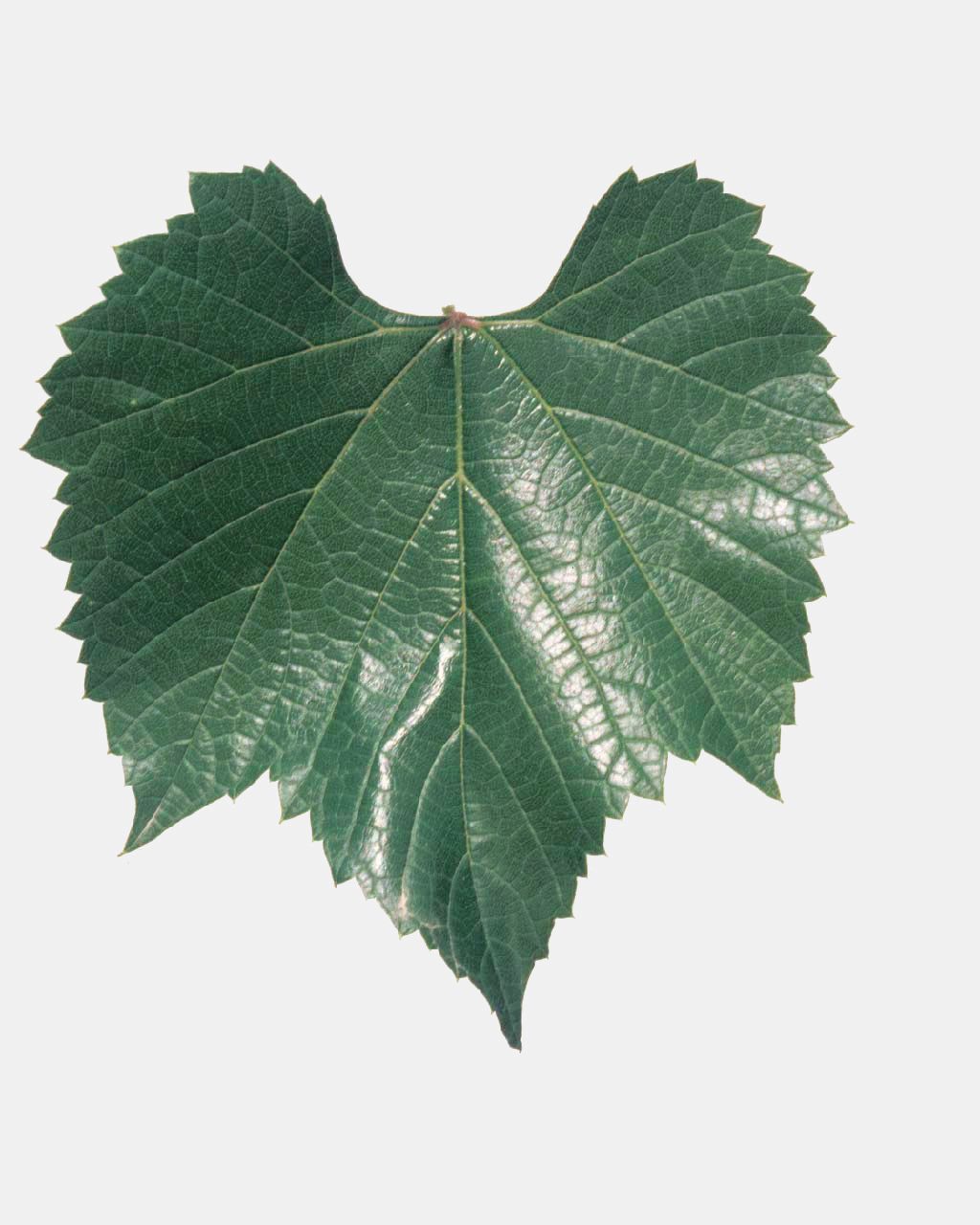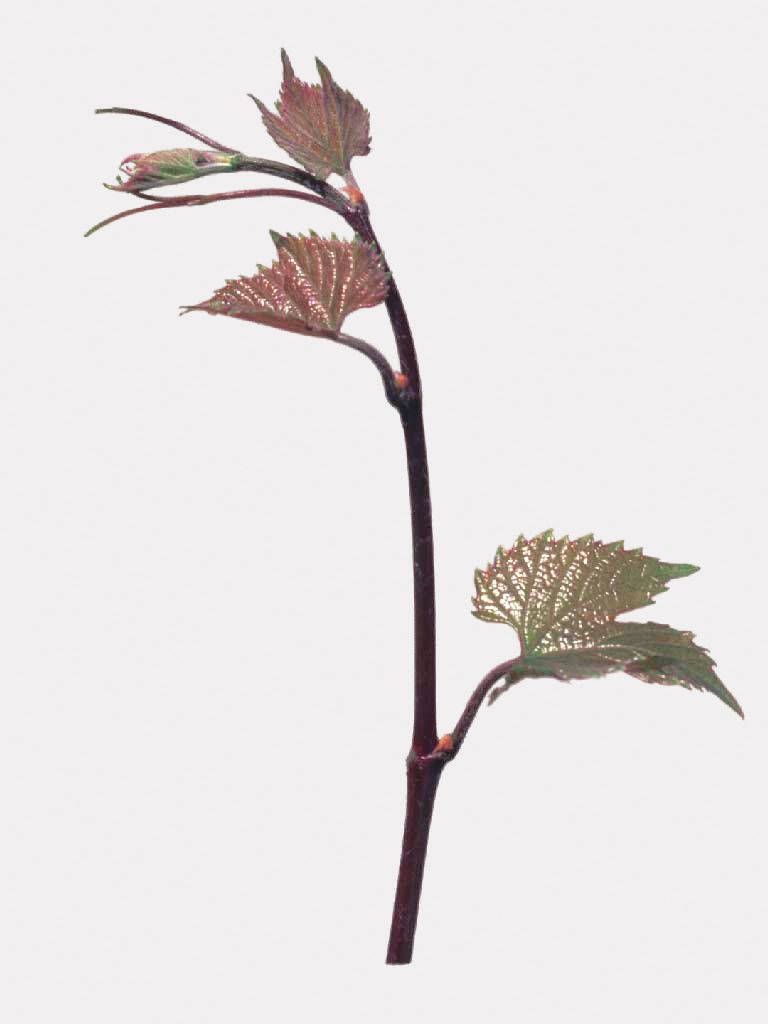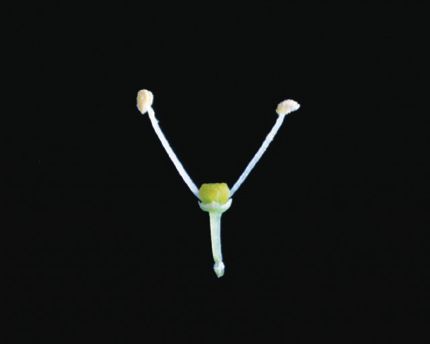420 A MGt
420 A Millardet et de Grasset
This variety results from the crossbreeding of Vitis berlandieri and Vitis riparia.
The genetic origin of the variety is also indicated when known thanks to hybridiser data or genetic analysis either published or obtained by the teams at INRAE in Montpellier (UMR AGAP) and at the Vassal-Montpellier Grapevine Biological Resources Centre (CRB-Vigne).
This variety results from the crossbreeding of Vitis berlandieri and Vitis riparia.
The rootstock variety is presented by the abbreviation or name under which it appears in the national catalogue and which is also the most commonly used in French grapevine nurseries and French viticulture. There is no official list of synonyms for rootstock varieties.
420 A MGt
The name of the breeder and/or selector is indicated, as is the year in which the variety was bred.
Alexis Millardet and Charles de Grasset, 1887.
The figures are estimated based on the computerised vineyard register and bibliographical data.
13 000 ha . Aquitaine, Rhône-Alpes, Languedoc-Roussillon, Midi-Pyrénées, Bourgogne Franche-Comté, Provence-Alpes-Côte d’Azur.
Evolution of cultivated areas in France
The figures provided are taken from vineyard land registers (IVCC, ONIVIT, ONIVINS), general agricultural censuses (SCEES-INSEE) and the current computerised vineyard register (DGDDI, FAM).
Regional vine planting data is available on the following site: https://visionet.franceagrimer.fr/Pages/DonneesInteractivesDocs.aspx?sousmenu=observatoire%20de%20la%20viticulture.
The figures provided are taken from vineyard land registers (IVCC, ONIVIT, ONIVINS), general agricultural censuses (SCEES-INSEE) and the current computerised vineyard register (DGDDI, FAM). Regional vine planting data is available on the following site: https://visionet.franceagrimer.fr/Pages/DonneesInteractivesDocs.aspx?sousmenu=observatoire%20de%20la%20viticulture.
Year |
ha |
|
|---|---|---|
|
1945 |
68 |
|
|
1955 |
100 |
|
|
1965 |
107 |
|
|
1975 |
71 |
|
|
1985 |
39 |
|
|
1995 |
25 |
|
|
2005 |
49 |
|
|
2015 |
25 |

Only the main ampelographic elements enabling the rootstocks to be characterised and identified are provided. They are described according to the ampelographic descriptor code recognised by the International Organisation of Vine and Wine (OIV), the International Union for the Protection of New Varieties of Plants (UPOV), the Community Plant Variety Office (OCVV) and Bioversity International (for more information, see the "Ampelographic glossary" menu). The photographs of buds, flowers and adult leaves were taken indoors by the INRAE team at Domaine de Vassal from material sampled from the ampelographic collections of the Vassal-Montpellier Grapevine Biological Resources Centre. Note: the scale of the photos is not the same for the three organs shown. The photos of buds have been reduced (x 0.5 approx.), as have those of the adult leaves (x 0.25 approx.), while those of the flowers have been enlarged (x 4 approx.).
- the tip of the young shoot that is half open or closed, with a medium density of prostrate hairs,
- the slightly bronzed young leaves,
- the elongated shootd, with an elliptic section, a ribbed surface, red internodes and nodes on the dorsal side, and on the ventral side, green internodes and red nodes up to the tip, and no erect hairs,
- the wedge-shaped, shiny, dark green adult leaves, entire or with sometimes three or five lobes on the leaves at the base, with an open U-shaped petiole sinus, a moderate anthocyanin coloration of veins, and on the lower side of the leaves, a low density of erect hairs,
- the male flowers,
- the yellow or reddish brown woody shoots.
Genetic profile
The genetic profile of the variety is provided for the 9 microsatellite markers (or SSR markers) selected under the European programme GrapeGen06 (http://www.eu-vitis.de/index.php) and by the OIV. The absolute size values of the alleles may vary slightly from one laboratory to another, but the relative differences between the two alleles of one single microsatellite are constant. The genetic analyses were conducted by the INRAE Montpellier team (UMR AGAP) and the IFV’s Plant Material Centre.
| Microsatellite | VRZAG62 | VRZAG79 | VVMD25 | VVMD27 | VVMD28 | VVMD32 | VVMD5 | VVMD7 | VVS2 |
|---|---|---|---|---|---|---|---|---|---|
|
Allele 1 |
191 |
256 |
238 |
238 |
243 |
263 |
236 |
231 |
124 |
|
Allele 2 |
196 |
256 |
270 |
270 |
245 |
263 |
261 |
262 |
135 |
The degree of tolerance to the root form of phylloxera and resistance to nematodes (Meloidogyne hapla, Meloidogyne incognita and Meloidogyne arenaria), to Agrobacterium vitis (the bacterium responsible for burls) and to certain soil fungi is stated on the basis of observations or bibliographical data.
420 A MGt is highly tolerant to the root form of phylloxera. Its resistance to Meloidogyne incognita and Meloidogyne arenaria nematodes is also good.
The level of wood production by the rootstock strains is stated (source: ENTAV-ONIVINS survey of grapevine nurseries, April 2001). The suitability for cleaning, disbudding, cutting and grafting is also specified. Further details are provided if the rootstock variety requires special precautions during grafting and layering.
420 A wood production is moderate (30 000 to 60 000 m/ha) with canes that easily lignify, but the internodes diameter is sometimes thin. The growth of lateral shoot buds is significant. 420 A MGt has a low cutting capacity and a moderate grafting aptitude. In order to improve the percentage of cuttings rooting, a slightly more substantial hormoning may be applied.
All certified clones are listed, as are the surface areas of the mother vine of clones that are propagated. For the moment, clonal selection of rootstock is conducted solely for sanitary purposes.
In France, the 5 certified 420 A MGt clones carry the numbers 10, 11, 169, 241 et 758. Among those, the clones multiplied are:
- clone No. 10: 4 ha 91 aresof mother vines producing certified material, in 2017,
- clone No. 11: 2 ha 69 ares of mother vines producing certified material, in 2017,
- clone No. 169: 98 ares of mother vines producing certified material, in 2017,
- clone No. 241: 6 ha of mother vines producing certified material, in 2017,
- clone No. 758: 10 ha 77 ares of mother vines producing certified material, in 2017.
Datas are extracted from: Les chiffres de la pépinière viticole, 2017, Datas and assesment of FranceAgriMer, may 2018.
This paragraph provides information on the behaviour of the rootstock variety in relation to the structure, texture and composition of the soil, its mineral content and the soil’s pH. It also states the behaviour of the rootstock when faced with an excess or lack of water during the vegetative period. Chlorosis Iron chlorosis is related to problems of iron assimilation due to low iron content and/or high carbonate content in soil. Total calcium carbonate content alone gives only a partial idea of the chlorosis-inducing power of the soil. The active calcium carbonate content corresponds to the percentage of carbonate present in the fine fraction of the soil (clays, fine silts). Depending on the characteristics of the parent rock and its geological origin, this represents a variable percentage of the total calcium carbonate. The chlorotic power index (IPC) is a calculation which takes into account the active calcium carbonate content and the easily extractible iron content of the soil. These three values provide an insight into the risk of chlorosis and allow growers to choose the most suitable rootstock variety accordingly. Tylosis and apoplexy These apoplexy phenomena are linked to problems of water circulation through the plant when evapotranspiration is high (dry wind following heavy rainfall in the summer season) and the absorption of water through the roots is limited. In this case, the high pressure in the vessels causes air bubbles (cavitation) and tyloses (invagination of the membrane of neighbouring cells in the vessels) to form, which causes a slowing of sap circulation and water stress in the leaves.
420 A MGt resists up to 35% of "total" limestone, 20% of "active" limestone and an ICP of 40. Its resistance to iron chlorosis is moderate to good. This rootstock seems well adapted to fertile conditions and to fairly deep clay-limestone soils with a sufficient water input. However, it is poorly adapted to compact soils and excessive spring humidity. 420 A MGt does not absorb well potassium in the soil. The varieties grafted, particularly the most sensitive, can frequently show signs of potassium deficiency with this rootstock.
The rootstock may interact with the characteristics of the graft in terms of precocity of the vegetative cycle and the growth and development of the branches, as well as yield factors (fertility and berry size). In some cases, the risks of incompatibility or poor affinity of the rootstock variety with a graft variety are specified.
420 A MGt confers a low vigor to the grafts and the vegetative development of the vines is limited. It does however tend to delay maturity. 420 A MGt promotes floral initiation. Given the low confered vigor, yields must be limited, particularly during the first years of production, to avoid unbalanced vines. 420 A MGt works well with Cabernet franc, Merlot and Tannat.
The rootstock may interact with the characteristics of the graft in terms of precocity of the vegetative cycle and the growth and development of the branches, as well as yield factors (fertility and berry size). In some cases, the risks of incompatibility or poor affinity of the rootstock variety with a graft variety are specified.
- Catalogue des variétés et clones de vigne cultivés en France. Collectif, 2007, Ed. IFV, Le Grau-du-Roi, France.
- Documentary collections of the Centre de Ressources Biologiques de la Vigne de Vassal-Montpellier, INRAE - Montpellier SupAgro, Marseillan, France.
- Cépages et vignobles de France, tome 1. P. Galet, 1988, Ed. Dehan, Montpellier, France.






